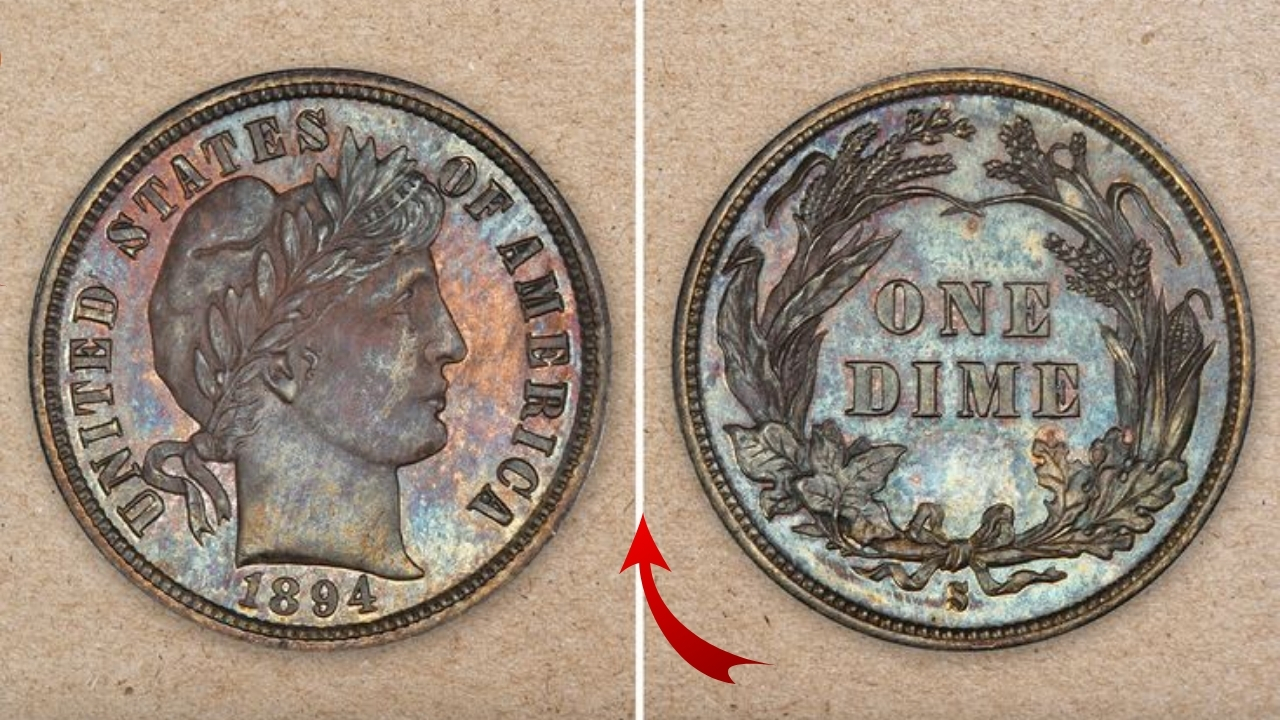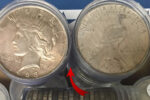Barber dime: The 1894-S Barber dime enjoys status as one of the most iconic coins in United States numismatics, comprising the third member of what many collectors refer to as the “Big Three” rare American coins, which also includes the 1804 silver dollar and 1913 Liberty nickel.
Little did the U.S. Mint know that some 220 years later, a handful of these enigmatic coins would exist on the open market and it was believed by many numismatists and researchers that 24 still survive of which fewer than 10 are confirmed to exist today.
Table of Contents
Barber dime: The Creation Mystery

So what is the start of the story?It starts at the San Francisco Mint in 1894.They didn’t need to coin normal dimes due to the recession and the hoard of stocks of coins.
Mint records indicate just 24 dimes were produced that year—incredibly low production in any context. But why run such a minuscule number after all?
Over the years a number of theories have been proposed. The most favored account of why these dimes were struck is that then-Superintendent of the San Francisco Mint John Daggett called for the dimes to be produced for a no other reason than to reconcile the mint’s books at the end of the year.
It was the end of the fiscal year and the mint’s ledger was said to be $2.40 shy of the necessary total in silver bullion. The accounts could balance perfectly if 24 dimes ($2.40 in face value) were struck.
While this explanation is reasonable, it has never fully silenced the critics in the numismatic field. Why would such a slight difference necessitate coinage that was specially made and not corrected through paper work.
The amazing technical quality of the surviving issues, almost all in proof or near proof condition also supports that these were not some routine type that was produced.
Barber dime: The Ice Cream Connection
The most delightful — and often-repeated — story involving the 1894-S dime is probably the story that concerns John Daggett’s daughter, Hallie. In this legend Daggett gave three of those newly minted dimes to his daughter with orders to ” keep them until she grew up, then go to town and they will fetch so much money “.
Legend has it that that day, on her way home from the mint, young Hallie blew one of her three precious dimes on an ice-cream cone—an impulse that would end up costing her an amazing sum of money.
Of course, this story humanizes the coin’s past, but many scholars today doubt that it is true. Suddenly, the coin taught a lesson to the family of Hallie Daggett, who would have been somewhere around 15 years old in 1894 and maybe even old enough to appreciate the value of rare coins.
Also, there are no contemporary records to substantiate an account that was in print many years after it supposedly took place.
The “ice cream dime” story endures, however, because it so perfectly captures the numismatic imagination: a small choice with massive ramifications in the future, and the tempting prospect that the ninth 1894-S dime (if, indeed, one ever does turn up) could have been used to buy a childhood treat.
The Known Specimens
Barber dime: There are currently just nine certified 1894-S Barber dimes that experts and major certification services agree are genuine. These include:
The Ice Cream Specimen (Daggett-Hallie specimen) – PCGS PR66 – Last trade 2016 – $1,997,500
The Eliasberg Specimen – PCGS Proof 65 – Exquisite Proof – One of the greatest collections of U.S. coins ever formed
(1861) James Stack Specimen – PCGS PR66 – Last traded in 2007 at $1.9 million
The Rappaport Coin – NGC PF66 – Lightly Cleaned
Norweb Specimen – PCGS PR62 – Lower-grade as a result of cleaning and circulation friction
F.C.C. Boyd Specimen – PCGS PR65 – Last traded in 2005
Richmond Collection Specimen–NGC Proof-64 Light Cleaned.
The Jerry Buss Specimen – PCGS PR66 – Formerly in the Collection of the ex Los Angeles Lakers owner
The Newcomer, Specimen, Ungraded with current whereabouts unknown
The majority of extant examples are prooflike in that debate persists over whether the coins were struck as proofs, or simply from polished dies in an unusually careful manner.
The quality consistency would indicate that these were no average circulation strikes but rather special presentation pieces that were made with careful attention.
The Market Valuation and Investment History
The 1894-S Barber dime is one of the most dramatic appreciation stories in numismatics. An example brought $4,750.00 in 1950.
The price reached $825,000 by 1996, and in 2016 a particular piece broke through the $1.9 million mark at auction. This even in inflation adjusted terms is an amazing increase, making the coin a numismatic bonanza, and investment device.
There are many reasons for this remarkable valuation:
Of the highest rarity, with fewer than 10 known examples
“Big Three” U.S. rarities
The compelling backstory and mint documentation proves a limitedy AND the M-16 Helmeted bust motif.
High quality of surviving specimens
Barber dime: The coin’s compitability with the rest of the possible Barber dime series
Unlike a few numismatic rarities whose worth is defined by technicalities or varieties visible only to specialists, the draw of the 1894-S dime is instantly perceivable to laypeople: Just 24 were ever minted, and almost all of those have vanished.
Authentication Challenges
The high value of real specimens has predictably brought with it some very advanced counterfeit attempts. Commonly seen fakes include:
Modified date 1894-O or 1892-S dimes with the mintmark altered
There are modern replicas made with todays minting techniques
“Worn” counterfeits that were artificially handled, circulated, or otherwise processed by the counterfeiter to appear used, often to hide some of the production flaws
For any purported 1894-S dime, professional authentication by PCGS or NGC is a must since the micro-details of the die and proper silver content are the most important points of authentication.
Barber dime
The 1894-S Barber dime somehow leaves its tangible state and instead, it metaphorically comes to personify the romance and mysteries inherent to coin collecting.
A hybrid of extreme rarity, quality, historical importance and colorful backstory have combined to create a numismatic perfect storm that still enthralls collectors more than one hundred years after its birth.
For the vast majority, an 1894-S Barber dime will forever be a dream. But the coin lives on as a legend, a tantalizing fragment of American monetary history: a small bit of silver, weighing 2.5 grams, that weaves a tale of mint-room operations, potential accounting improprieties, on-a-whim ice cream purchases and the massive value that scarcity can create in the numismatic marketplace.
Whether the outstanding unaccounted for examples will ever surface from lost coin albums, bank vaults or even loose pocket change is one of the collecting world’s most intriguing mysteries.


